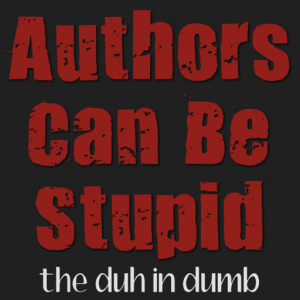Authors Can Be Stupid: $500 ebook design for free!
One of the things that keeps being said about self-published ebooks is that they lack professional book design. This is short for “they look like crap.” As you are aware, I have two ebook readers, and I’ve purchased commercially available ebooks from traditional publishers. Those designers are no great shakes, for reasons I can’t fathom. What most of you don’t know is that back in the 1980s, while working for Flying Buffalo, Liz Danforth and Pat Mueller dragged the entire game industry into the realm of professional layout and design through the work they did on all of our products. I was fortunate enough to learn from them the arts of typesetting, layout and design.
So, here are the quick and easy rules for making sure your ebooks (especially epub versions) don’t look like amateurish crap.
1) Get a book on coding HTML, or cultivate a friendship with someone who knows this stuff. There are a couple coding tricks you’ll need to know. Most ebooks work off HTML, so if you can do it on a web page, you can do it in an ebook.
2) Choose a font. For the sake of simplicity, just use Times New Roman. (If you are picky about fonts, experiment, but be aware that not all devices support all fonts. Times New Roman is supported.) Font size is irrelevant since the joy of ebook readers is that the owner can change font size.
3) Prepare the text by reducing it to single-space. And justify the text. Nothing screams amateur like ragged-right text.
4) Do not put empty lines between paragraphs (the way most webpages like this format themselves). That looks like crap, doesn’t look like any print book anywhere, leaves tons of blank space and makes for weird page spacing. Instead you will indent your paragraphs, just like in a physical book. The code is easy to write and I use the measure of 1.5em. (I know, looks like code. It is, and you or your HTML-savant friend will put it right where it needs to go.)
5) Instead of putting in a blank space to suggest the passage of time, find a small illo (even just a straight line) to drop into that space. I have disks upon disks of copyright-free illustrations. I pick one appropriate to the story and slip it in as my break spacer. If you use the same illo throughout the book, it doesn’t add much to the file size. I prefer .pngs, but .jpgs work just fine.
6) Your cover should not be representative, it should be iconic. The cover for  The Silver Knife was done by Kat Klaybourne and is just such an iconic image. It reduces great to an icon for the iPod/iPad interface and is attractive enough to catch buyers’ eyes. It is the bestselling of the titles I have on through the appstore, in fact, because of this cover. (Doesn’t hurt that the story rocks, too… Mycroft Holmes, Jack the Ripper and a lot more. A *lot* more.)
The Silver Knife was done by Kat Klaybourne and is just such an iconic image. It reduces great to an icon for the iPod/iPad interface and is attractive enough to catch buyers’ eyes. It is the bestselling of the titles I have on through the appstore, in fact, because of this cover. (Doesn’t hurt that the story rocks, too… Mycroft Holmes, Jack the Ripper and a lot more. A *lot* more.)
Put that all together, add the cover to the front of the file, convert it to the Kindle format, or any other format, and you’re set. A professional looking book that will look as good as or better than anything coming out of traditional publishers.



 09. Feb, 2010
09. Feb, 2010 








11 Responses to “Authors Can Be Stupid: $500 ebook design for free!”